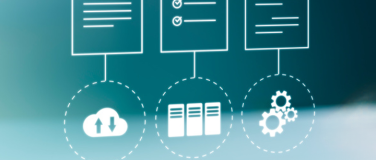This year, we published over 215 blog posts spanning a wide variety of topics––from why messaging queues suck to why ESB-led integration is no longer an adequate approach for organizations.
Check out the top 7 most popular blog posts for this year!
1. Open API and RAML: Better together
We are committed to an API-first strategy. We have been strong supporters of RAML, the RESTful API Modeling Language. But we also joined the Open API Initiative of the Linux Foundation––giving developers the best of both worlds.
Learn more about the Open API Initiative and RAML, and why they are better (and stronger) together.
2. Introducing Mule 4 and Anypoint Studio 7 beta
Earlier this year, we released the Mule 4 beta, which adds vastly more power, higher speeds, and greater simplicity into the famously small footprint of––the industry’s leading all-purpose engine for building application networks.
Read more about Mule 4 features and check out the Early Access release announcement.
3. Dev Guide: Design Reusable APIs to save time (Part 1)
At MuleSoft, we talk a lot about API-led connectivity. In the first part of this 3-part how-to series, you will know exactly how to implement it. You will learn to leverage an existing API specification to consume an external REST API, generate RAML files to expose your systems, and publish them to Anypoint Exchange.
Discover how to build a complete end-to-end application powered by APIs using this guide.
4. Training Talks: How to format numbers in DataWeave
In this Training Talk, you will learn how to convert and format numbers as strings or numbers in DataWeave. You will see examples based on the java.text.DecimalFormat class format, learn how to handle decimal numbers that are smaller than 1, as well as how to format the integer part of a number.
Watch this Training Talk to further your data integration skills using DataWeave.
5. HowTo – Leveraging Maven for build automation
One of the core components of the continuous integration process in DevOps is the build process. As soon as a developer commits the code to a version control repository, the build tool compiles the source code runs unit integration tests, and generates feedback for the developers.
Learn how to use Anypoint Platform’s built-in Maven support and MUnit to test Mule applications.
6. Why DataWeave is the main expression language in Mule 4 beta
One of the major changes in Mule 4 is the introduction of DataWeave as our primary expression language. Although this may seem like a radical change, in this blog post we explain some of the reasons behind our decision, and why this represents a major leap forward. You will also see some demo examples and get an answer to a question that is likely on your mind: “what about MEL?”
Read more about the role of DataWeave in Mule 4.
7. What is API-led connectivity?
API-led connectivity is a methodical way to connect data to applications through reusable and purposeful APIs. This connectivity approach empowers everyone in the business to access their best capabilities in delivering applications and projects through discovery, self-service, and reuse.
Find out more about API-led connectivity and how organizations across all industries have benefited from adopting the approach.
And that’s it for this year! Comment below for suggested topics on content you would like to learn more about; see you in 2018!









